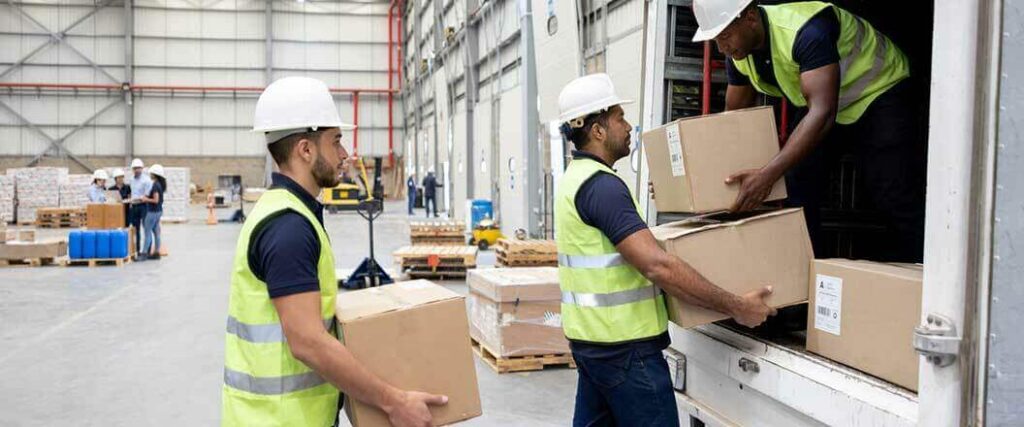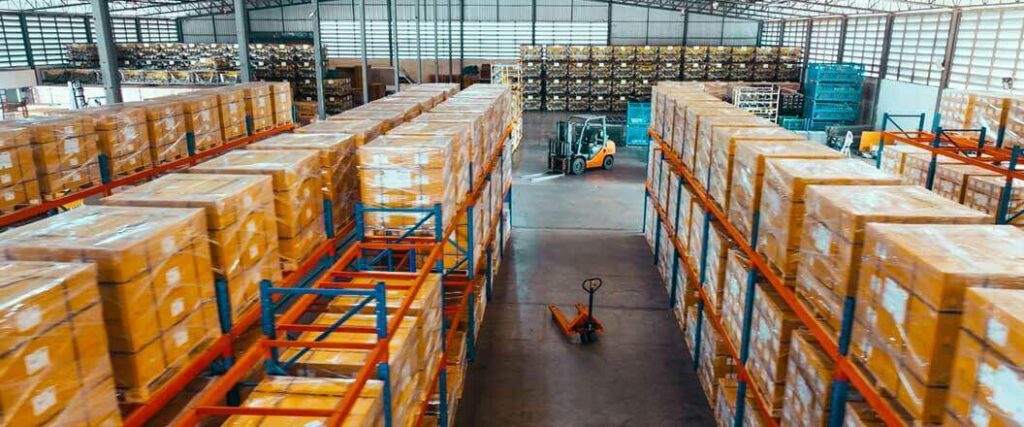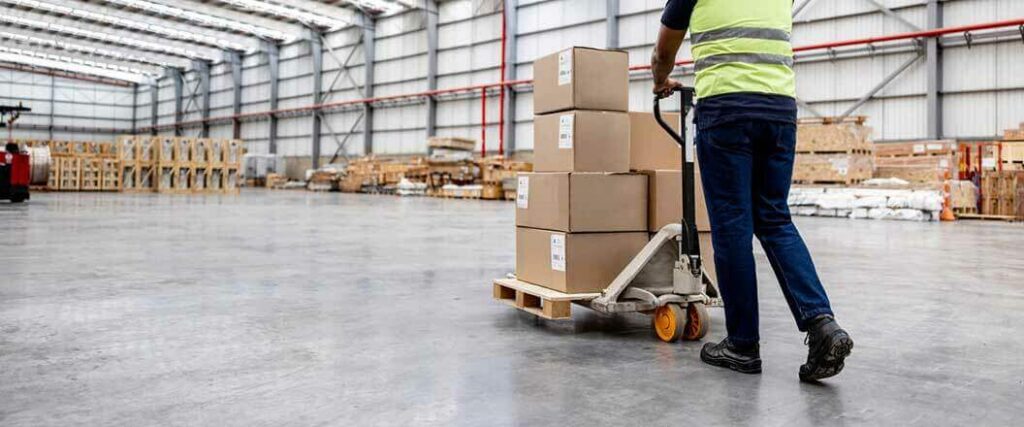What is Cross Docking? In the realm of supply chain management, this service is used to ensure goods remain in a constant state of flow. Retailers leverage cross docking to increase the efficiency of their shipments. Without it, their orders will be stifled and delayed, allowing competitors to get the upper hand.
The Transload Logistics Association defines cross docking as a logistics procedure where products from a supplier or manufacturer are distributed directly to a customer or to another mode of transport with minimal to no handling or storage time. It ensures swift freight movement, reducing storage costs and speeding up delivery.
We’ll discuss the inner working of cross dock services and how it can benefit your retail operations.
What is Cross Docking?
At its core, cross docking involves transferring products directly from an incoming transport vehicle (like a truck or ship) to outbound transport. During the entirety of this process, storage is typically limited. However, there are some variations of this service that does involve holding goods for a short period of time.
Cross docking consists of the following steps:
- Products arrive at a dock terminal
- Goods are quickly sorted and assessed
- Products are loaded onto the next vehicle for transport
These three simple steps are all that’s need to perform cross docking. Retailers that use this service are able to enjoy a variety of benefits.
These include:
- Speed
- Cost-efficiency
Products arrive at their destination much faster with cross docking, which satisfies shippers and customers alike. This service is also fairly cheap since goods aren’t stored for long periods of time. The service can be used when moving non-palletized and palletized freight. As a result, retailers have more flexibility in how they ship goods while using this service.

Cross Docking Versus Traditional Warehouse
There are key differences between cross docking and traditional warehousing. Neither of these services are superior to the other. Instead, it all comes down to the unique needs of retailers. That said, it’s a good idea to understand the differences between the two options.
With a traditional facility, retailers can expect:
- Long-term storage and related costs
- Increased handling and management of freight
At a standard warehouse, goods are received and stored for an extended period. Items might sit on shelves for days, weeks, or even months before they’re shipped out. Products also undergo multiple handling stages.
This includes:
- Unloading
- Shelving
- Picking
- Shipping
Costs are incurred at each stage of the service when shippers use normal facilities. Each touchpoint also represents an increased risk for damage. Cross docking warehouses operate in a very different manner.
This includes:
- Swift movement of goods
- Minimal storage
In cross docking, goods stay on the move. There is very little storage that occurs during the entirety of this service. If goods are kept in one place, it can slow down the entire operation of the distribution center.
Utilizing a cross dock warehouse means the shipper saves time in getting products to customers. A key to success is the use of technology to track shipments in real-time. Businesses are able to see exactly what is moving through the warehouse and adjust shipment levels as needed.
When a retailer is trying to decide between the two warehouses, their decision often comes down to shipping times, cheaper costs and a more efficient process. Cross docking provides all these benefits, and allows shippers the flexibility to make the changes they need to their distribution operations.

Types of Cross Docking
The cross docking process has two distinct types. Businesses can choose between post-distribution and pre-distribution variations of this service.
We’ll discuss these two slightly different versions of cross docking and how businesses use each to their advantage.
Pre-Distribution Cross Docking
Pre-distribution cross docking works by immediately loading all inbound shipments, sorting them, and loading them onto an outbound vehicle that will take their goods to the final destination.
This type of strategy works by alerting warehouse workers of an incoming shipment and providing them with predetermined distribution instructions. As a result, the turn around of goods happens very quickly.
Retailers that run their own warehouse often decide to use pre-distribution cross docking. For this service to work successfully, tight synchronization between businesses and their customers is required. This will ensure that pre-distribution cross docking strategy works efficiently.
Post-Distribution Cross Docking
Unlike pre-distribution cross docking, post-distribution does utilize storage to a limited degree. When goods arrive at a warehouse, the products are kept in a safe area for a short time before being sent out for delivery to the customer.
This type of cross docking service is very beneficial for a retailer, as it allows them to take some extra time to decide where they want to send their goods. However, it doesn’t work out for every type of product. This option is most useful when planning outbound shipments of high volume and high turnover orders. with various products.
Find out how cross docking compares to other services, like transloading and break bulk shipping.

Cross Dock Goods
The purpose of a cross dock facility is to get things in and out of the warehouse facility quickly for delivery to the customer. While goods can be shipped as non-palletized and palletized freight, not all items are appropriate. Suitable shipments for cross docking vary and tend to include products that have a limited shelf life or are marked for expedited delivery.
Popular items for cross docking include:
- Perishable items
- Pre-packaged and pre-tagged goods
- Products with stable demand
- In transit items
- Promotional or seasonal goods
For perishable items, time is of the essence. Fresh produce, dairy, meat, and similar goods need to reach their destination quickly to ensure freshness and prevent spoilage. Cross docking reduces storage time, making it an ideal method for transporting these items.
Pre-packaged and pre-tagged goods are great for this service as well. This can consist of a variety of cargo like electronics and certain apparel. These products can swiftly switch between an inbound and outbound vehicle.
Goods with predictable and consistent demand patterns are well-suited for cross docking. Retailers can’t afford to run out of stock for products like these. Using this service will ensure freight gets to the final destination in a timely manner.
Items that are part of a larger shipment, perhaps being combined with other products or being transferred between transport types (like from a truck to a plane), are often perfect for cross docking, too. This process ensures minimal handling and storage, reducing potential delays.
Promotional and seasonal goods can benefit from cross docking services as well. Items like these need to reach the final destination quickly, since peak sales are within a limited window. This service will keep such goods flowing through the supply chain.
Learn how cross docking can help companies running eCommerce businesses.

Consider 3PL Cross Docking
Many retailers that can’t perform their own cross docking choose to outsource. Businesses can partner with a 3PL provider that has the necessary infrastructure, technology, and expertise to perform this service. Rather than sending goods to their own warehouses, retailers will send them to the provider they hired.
Benefits of outsourcing cross docking to a 3PL has a few key advantages:
- Expertise
- Cost-effectiveness
- Scalability
3PL providers come with a wealth of experience in logistics. They typically have the know-how to optimize cross docking processes, ensuring maximum efficiency. For many businesses, outsourcing this service is more cost-effective than running it in-house. Retailers can potentially save a fortune when they outsource their cross docking operations.
Another advantage of outsourcing is the scalability that comes with it. As a business grows, 3PL providers can often scale their services to match, ensuring consistent efficiency regardless of volume changes.
Since technology plays a major role in this service, businesses able to integrate with existing warehouse systems can keep tabs on shipments and inventory. Others who have lagged in updating technology and tracking goods may find it overwhelming to remain as competitive.
Benefits of Cross Docking
At its core, there are many cross docking benefits that can refine a retailer's operations. With this crucial service, they’ll be able to fulfill orders and keep their stores from running out of stock.
The benefits for cross docking, beyond saving money, include:
- Eliminating the need to store inventory in the warehouse
- Reduced material handling
- Quickly processed inbound and outbound shipments
- Ability to consolidate LTL shipments
- Reduced labor cost and transportation costs
Cross docking allows goods to be transferred almost immediately from inbound to outbound transportation modes. This direct transfer system minimizes or sometimes even eliminates the need for cargo to be stored in a warehouse.
Traditional warehousing often involves multiple steps that cross docking bypasses. This not only decreases the handling of materials but also reduces the potential for damages that can occur.
Thanks to fast processing, cross docking lets goods move quickly through the supply chain. When a shipment arrives, an outbound vehicle is already prepared to deliver the freight. This contributes to the speed of cross docking.
Products arriving from various suppliers can be consolidated into full truckloads destined for similar locations or routes. This process optimizes transportation capacity and can lead to significant savings, especially when the alternative would be multiple trucks traveling with space to spare.
With goods spending minimal time at the dock and no need for extensive warehousing, labor costs associated with inventory management and prolonged handling are cut down. Fewer labor costs mean less money spent by retailers using this service. We’ve included data on the other potential savings that cross docking can provide.
Potential Cost Savings of Cross Docking
| Cross Docking Service | Potential Cost Savings |
| Storage | 10%-50% |
| Inventory | 5%-%15 |
| Damage or Spoilage | 2%-5% |
| Order Fulfillment Time | 5%-10% |
Provided by Research Gate
As the table shows, cross docking can provide an array of expense benefits in various logistics operations. The exact amount of cost savings will change based on the shipment and how the service is carried out.
Read our article on the benefits of cross docking to learn more about the benefits of this service.
Help Your Business with Transload Services USA
At Transload Services USA, we don't just understand cross docking; we excel in it. But that's just the tip of the iceberg. Our logistics professionals are ready to assist you in finding the right warehouse solution for your shipments.
In addition to cross dock, we also offer:
- Transload: Shift your goods between different modes of transport seamlessly.
- Freight Consolidation: Merging smaller shipments into one to optimize transportation efficiency.
- Freight Rework: Adjusting and reconfiguring shipments to meet specific requirements or rectify issues.
If you're looking for a partner that brings expertise, efficiency, and innovation to the table, look no further. Dive into the world of optimized logistics with Transload Services USA.
Give us a call at (352) 282-4588 to find an option that suits your needs, or fill out your quote request to get started.


